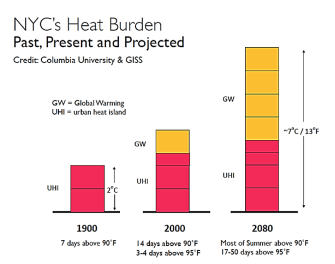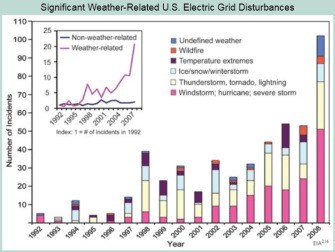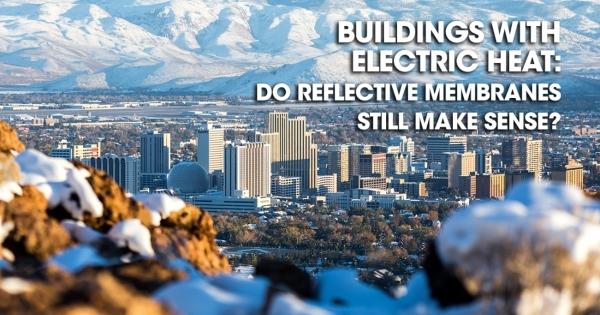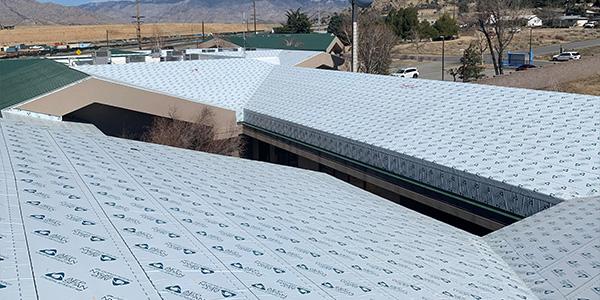Are You Considering Adaptation in Your Roof Design?

By Thomas J Taylor, GAF.
Understanding the differences between sustainable and resilient design in roofing.
In a recent article, I discussed the difference between sustainable and resilience as pertaining to low slope roofing.
Both words are often considered as describing “good” attributes of roofing and are sometimes assumed to be essentially the same. There have been and continue to be industry discussions about the environment and climate change; sustainability and resilience are sometimes just assumed to address environmental and climate change concerns in ways that are “good.” But sometimes, these words are used without really appreciating whether or not they are essentially the same, different, or in some way linked.
As discussed in the article,
Sustainability is the capacity for:
-
Human health and well being
-
Economic vitality and prosperity
-
Environmental resource abundance
So, the building designer who wishes to incorporate sustainability in their material choices might ask:
-
Are materials safe for humans and the ecosystem?
-
Is this design energy and resource efficient?
-
Is a material available or will its use today cause a shortage in the future?
In short, the building designer concerned with sustainability generally asks if materials are safe, are readily available, and do no harm to the environment.
In contrast, Resilience is the capacity to:
-
Overcome unexpected problems.
-
Continue or rapidly bounce back from extreme events.
-
Prepare for and survive catastrophes.
So, key questions for the building designer are:
-
Can a structure be occupied and functional after a severe storm or some other extreme environmental event?
-
Will occupants be able to function in the absence of utilities?
-
What reduction in occupational capacity is acceptable after an extreme environmental event?
The building designer concerned about a building’s resilience wants to maintain a building’s operability and functionality as much as possible after a damaging natural event such as an extreme storm.
Could Future Extreme Weather Events Get Worse? – The Case for Adaptation
Basic physics tells us that carbon dioxide absorbs infrared energy, i.e., heat. In other words, carbon dioxide in the atmosphere is partly responsible for absorbing heat both from the sun and what is re-emitted from the earth’s surface. Actual measurements have informed us that carbon dioxide levels in the atmosphere are rising. Taken together, these two statements suggest that global temperatures are rising, something that has been experimentally observed, as shown by NASA GISS (National Aeronautics and Space Administration Goddard Institute for Space Studies) below:

Another important observation is the changing nature of the built environment. A growing percentage of the world’s population are now urban dwellers, as shown by a chart from the United Nations Population Division:

There are several important consequences of urbanization:
-
Food, water, and power delivery to large urban areas is very complex and disruption affects far more people, possibly in more disastrous ways, than in rural populations.
-
Urban areas are highly reliant on complex fuel, transportation and communication networks. The resilience of these networks is harder to maintain than their simpler counterparts in rural areas.
-
The urban heat island, UHI, effect is a verified phenomenon whereby urban areas are significantly warmer than surrounding areas, especially during summer periods.
As the world’s population becomes more urban, cities become more populated, increasing the UHI effect as shown in this graphic:

UN Habitat has stated that “The effects of urbanization and climate change are converging in dangerous ways.” An example of what this could mean is shown below for New York City:

According to researchers at Columbia University and the Goddard Institute for Space Studies (GISS), while New York City experienced 7 days above 90°F in 1900, by 2080 most of the summer could be above 90°F with 17 to 50 days exceeding 95°F.
While extreme weather events can create direct challenges to the building envelope, such as high wind and flooding, there is also the indirect challenge due to electricity supply outages. Super Storm Sandy, which impacted the north-east region in the fall of 2012, not only caused significant damage to buildings, but also resulted in widespread loss of power to the New York urban region.
Electrical power outages, in turn, lead to a loss of building heat or air conditioning which can reduce or prevent functional business operations in affected buildings. Furthermore, as witnessed during the Super Storm Sandy event, elevators become inoperable, water in tall buildings ceases to flow due to pumps being inoperable, and trains and communications can be disrupted because of the lack of electricity. In short, urban regions are particularly sensitive to the loss of electricity. As can be seen in the following chart from the Energy Information Agency, significant weather-related electric grid disturbances have been increasing for many years, in tandem with increased extreme weather events.

Future Challenges for the Built Environment
Summarizing the challenges that might be faced by the future built environment, it would appear that:
-
Data suggests that extreme weather events are increasing. As such, buildings could be expected to face higher wind loads, greater frequency of large hail events, and flooding, amongst other challenges.
-
The built environment infrastructure might see increasing power outages, leading to significantly reduced functionality.
-
Urbanization is increasing, putting more of the built environment at risk of extreme weather events and power outages.
Adapting to Future Change
About ten years ago, it was recognized that reflective roofs are an adaptation strategy to long term global warming. Reflective roofing returns some of the sun’s energy back into space, lowering heat flux into buildings and helping to reduce the urban heat island effect. This is a strategy that will not only continue to be effective in the future but will become more important. However, while reflective roofs are now widely specified, they are still only a little more than 50% of the market for new and re-roofing projects each year.
Beyond reflective roof membranes, there are now efforts to develop membranes that not only reflect the sun’s energy but that can actively cool a roof’s surface. A little recognized fact is that reflective roofs do radiate heat back into the sky during the night, lowering the roof’s surface temperature to below that of the surrounding air. However, an Australian team at the University of Technology, Sydney, has shown that it is possible to lower a roof temperature significantly below ambient temperatures during the day, as shown in the following chart:

A. R. Gentle and G. B. Smith, A Subambient Open Roof Surface under the Mid-Summer Sun
The team’s experimental roof materials have been shown to radiate back more heat than they absorb from the sun. While this work is still in the research phase, it is a good example of how building envelope technology could adapt to changing needs. As urban heat islands become hotter, this is an example of adaptation to a roof membrane that could actively cool.
Already, in the area of improved thermal insulation, vacuum insulated panels are starting to become available. These offer a step change in the insulation value per inch (R-value per inch).
While true vacuum insulated panels might not be totally practical due to handling issues, researchers at the Oak Ridge National Laboratory have already improved on the concept and have prototypes of versions that show a potential for surviving the typical construction environment.
For high wind events, the means to improve wind resiliency is known; fully adhered assemblies typically have higher wind uplift resistance than mechanically attached systems. Taking this to its logical outcome, if all the layers are adhesively attached then the assembly becomes monolithic as shown in the following schematic:

By including a vapor retarder into the assembly, air movement up into the system is blocked, thereby further countering uplift forces. With only the bottom layer of insulation being mechanically fastened, the system is essentially monolithic with loads being spread across the assembly.
As discussed earlier, two major lessons from the aftermath of Super Storm Sandy were that both electric power and water were cut off for an extended period afterwards. The lack of electricity affects many things including heat and lighting. Lack of heat is best addressed by making sure that buildings are designed beyond code, which in the future could include the use of vacuum insulated panels described earlier. Lack of interior light could be addressed through greater use of passive lighting techniques. These include louvers that can direct light, light tubes, and skylights, as shown here, in the GAF World Headquarters atrium.

For water, rainwater harvesting systems are already in use in some areas of the US, for example Virginia. More widespread use of these and consideration of other approaches to capture water such as blue roof systems, with an example shown here,* would be adaptive towards future power outages.
Energy Resilience
Loss of grid electric power is a major challenge for urban infrastructure. While rooftop solar installations on commercial and industrial buildings is increasing, they do not provide power to a building in the event that the grid goes down unless supplemented with storage. When storage is added, such systems become the basis of microgrids, which are able to operate even when grid power is absent. Microgrids typically operate at the neighborhood level, but single buildings installed with solar and energy storage can operate as nanogrids.
Conclusion
As weather events become more extreme, today’s solutions for improving resiliency of the built environment may not be sufficient. Also, the growth of urban areas and increasing electric grid outages could compound the operability of commercial and industrial buildings. Fortunately, ways to improve the toughness and resiliency of roof assemblies are available today, with further possible improvements being identified. Increased use of solar power coupled with storage could ensure improved resiliency in the face of grid issues.
Learn more about GAF.
*Trade and company names or company products referred to herein are intended only to describe the materials and products discussed. In no case do these references imply recommendation or endorsement, nor do they imply that the particular products are the best available for the purpose discussed.
Source: GAF
Recommended For You

Your Exterior Home Inspection Checklist -Another Great Article and Infographic to Share with Your Homeowners on Social Media
Read More ...
Buildings with Electric Heat – Do Reflective Membranes Still Make Sense?
Read More ...
Learn how to select the right underlayment for your project based on permeability
Read More ...



-2025-xtv-mls-tour-2.png)















Comments
Leave a Reply
Have an account? Login to leave a comment!
Sign In